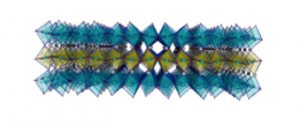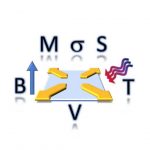 INTRO Designer thin film heterostructures of strongly correlated electron systems are an exciting playground for condensed matter physics, not only for the opportunities that they provide for fundamental research but also for the potential technological impact they could have. They are one of the most promising avenues to develop advanced materials technology that allows one to design and assemble materials of near-arbitrary electronic, magnetic and structural properties. Long term ambitions are the integration of such properties as superconductivity (allowing power transmission without loss), spin currents (transporting information without charge) or thermoelectricity (efficiently converting heat into electricity).
INTRO Designer thin film heterostructures of strongly correlated electron systems are an exciting playground for condensed matter physics, not only for the opportunities that they provide for fundamental research but also for the potential technological impact they could have. They are one of the most promising avenues to develop advanced materials technology that allows one to design and assemble materials of near-arbitrary electronic, magnetic and structural properties. Long term ambitions are the integration of such properties as superconductivity (allowing power transmission without loss), spin currents (transporting information without charge) or thermoelectricity (efficiently converting heat into electricity).
WHY NOW In recent years strong advances were made in depositing such complex materials with atomic precision layer by layer. This has led to a range of unexpected discoveries rooted in the fact that such materials go well beyond the paradigm of standard semiconductor physics with their charge excitations not behaving independently but instead strongly interacting. The quantum mechanical correlations driving the unusual properties of the bulk also lead to the emergence of new physics at both interfaces and in heterostructures that can now be tuned through composition control on atomic lengthscales. Famous examples are the emergence of a superconducting metal at the interface of two insulators and the giant magnetoresistance effect discovered a quarter of a century ago and now at the heart of almost every hard drive. Current research in transition metal oxide heterostructures therefore combines discovery and the quest for understanding. Our research is situated at this frontier. We are planning to investigate new materials that display phenomena that are impossible or very difficult to stabilize in bulk material. These include unconventional superconductivity, the effect of strong correlations on topological insulators and spin liquids/spin ice in low dimensions.
 THE CHALLENGE A current challenge in this research is that the measurement of fundamental quantities relating experiment and theory, such as magnetic properties or changes in entropy (specific heat / magnetocaloric effect). The reason is that typical designer heterostructures have extremely small sample masses and therefore vanishingly small thermodynamic signatures. A core role in our research program is therefore played by the use and development of bespoke experimental tools tailored to thin film materials. We employ them over a large range of parameter space in temperature and magnetic field.
THE CHALLENGE A current challenge in this research is that the measurement of fundamental quantities relating experiment and theory, such as magnetic properties or changes in entropy (specific heat / magnetocaloric effect). The reason is that typical designer heterostructures have extremely small sample masses and therefore vanishingly small thermodynamic signatures. A core role in our research program is therefore played by the use and development of bespoke experimental tools tailored to thin film materials. We employ them over a large range of parameter space in temperature and magnetic field.